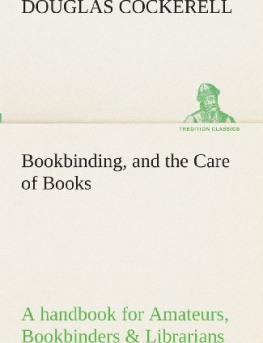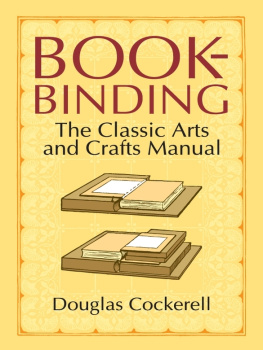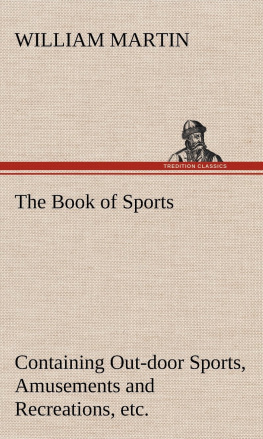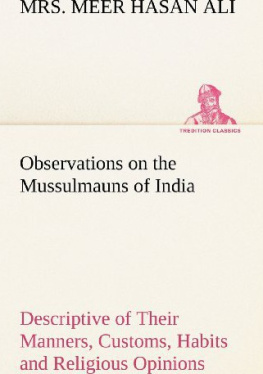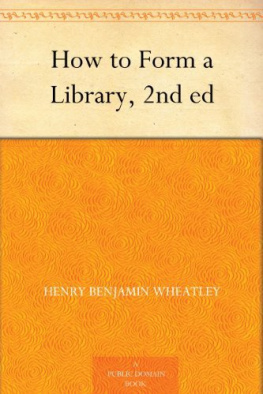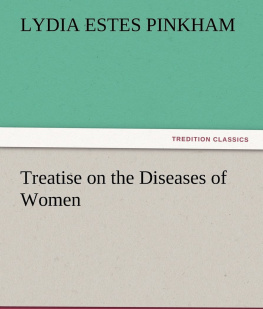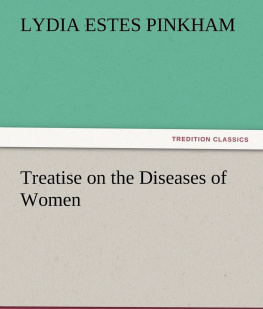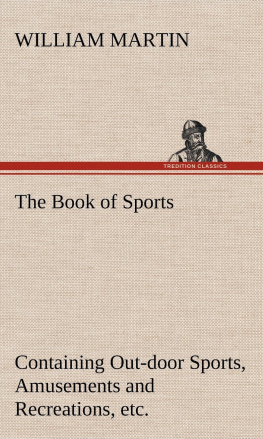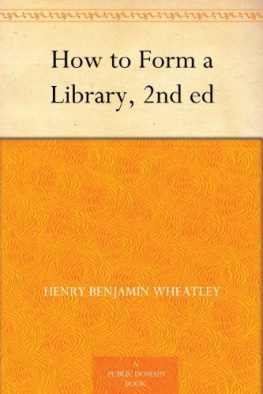BOOKBINDING, AND
THE CARE OF BOOKS
A HANDBOOK FOR AMATEURS BOOKBINDERS & LIBRARIANS BY DOUGLAS COCKERELL
WITH
DRAWINGS BY NOEL ROOKE AND OTHER ILLUSTRATIONS
NEW YORK
D. APPLETON AND COMPANY
1910
Copyright, 1901,
By D. Appleton and Company
All rights reserved
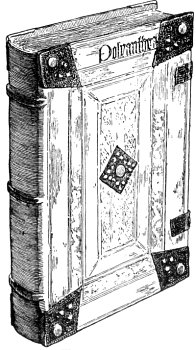
White Pigskin. Basle, 1512.
EDITORS PREFACE
In issuing this volume of a series of Handbooks on the Artistic Crafts, it will be well to state what are our general aims.
In the first place, we wish to provide trustworthy text-books of workshop practice, from the points of view of experts who have critically examined the methods current in the shops, and putting aside vain survivals, are prepared to say what is good workmanship, and to set up a standard of quality in the crafts which are more especially associated with design. Secondly, in doing this, we hope to treat design itself as an essential part of good workmanship. During the last century most of the arts, save painting and sculpture of an academic kind, were little considered, and there was a tendency to look on design as a mere matter of appearance. Such ornamentation as there was was usually obtained by following in a mechanical way a drawing provided by an artist who often knew little of the technical processes involved in production. With the critical attention given to the crafts by Ruskin and Morris, it came to be seen that it was impossible to detach design from craft in this way, and that, in the widest sense, true design is an inseparable element of good quality, involving as it does the selection of good and suitable material, contrivance for special purpose, expert workmanship, proper finish and so on, far more than mere ornament, and indeed, that ornamentation itself was rather an exuberance of fine workmanship than a matter of merely abstract lines. Workmanship when separated by too wide a gulf from fresh thoughtthat is, from designinevitably decays, and, on the other hand, ornamentation, divorced from workmanship, is necessarily unreal, and quickly falls into affectation. Proper ornamentation may be defined as a language addressed to the eye; it is pleasant thought expressed in the speech of the tool.
In the third place, we would have this series put artistic craftsmanship before people as furnishing reasonable occupation for those who would gain a livelihood. Although within the bounds of academic art, the competition, of its kind, is so acute that only a very few per cent. can fairly hope to succeed as painters and sculptors; yet, as artistic craftsmen, there is every probability that nearly every one who would pass through a sufficient period of apprenticeship to workmanship and design would reach a measure of success.
In the blending of handwork and thought in such arts as we propose to deal with, happy careers may be found as far removed from the dreary routine of hack labour, as from the terrible uncertainty of academic art. It is desirable in every way that men of good education should be brought back into the productive crafts: there are more than enough of us in the city, and it is probable that more consideration will be given in this century than in the last to Design and Workmanship.
W. R. LETHABY.
AUTHORS NOTE
It is hoped that this book will help bookbinders and librarians to select sound methods of binding books.
It is intended to supplement and not to supplant workshop training for bookbinders. No one can become a skilled workman by reading text-books, but to a man who has acquired skill and practical experience, a text-book, giving perhaps different methods from those to which he has been accustomed, may be helpful.
My thanks are due to many friends, including the workmen in my workshop, for useful suggestions and other help, and to the Society of Arts for permission to quote from the report of their Special Committee on leather for bookbinding.
I should also like to express my indebtedness to my master, Mr. T. J. Cobden-Sanderson, for it was in his workshop that I learned my craft, and anything that may be of value in this book is due to his influence.
D. C.
November 1901.
CONTENTS
| PART I |
| BINDING |
| PAGE |
| Editors Preface |
| Authors Note |
| CHAPTER I |
| Introduction |
| CHAPTER II |
| EnteringBooks in SheetsFoldingCollatingPulling to PiecesRefoldingKnocking out Joints |
| CHAPTER III |
| GuardingThrowing OutParing PaperSoaking off India ProofsMounting very Thin PaperSplitting PaperInlayingFlattening Vellum |
| CHAPTER IV |
SizingWashingMending |
| CHAPTER V |
| End PapersLeather JointsPressing |
| CHAPTER VI |
| Trimming Edges before SewingEdge Gilding |
| CHAPTER VII |
| Marking upSewingMaterials for Sewing |
| CHAPTER VIII |
| Fraying out SlipsGlueing upRounding and Backing |
| CHAPTER IX |
| Cutting and Attaching BoardsCleaning off BackPressing |
| CHAPTER X |
| Cutting in BoardsGilding and Colouring Edges |
| CHAPTER XI |
| Headbanding |
| CHAPTER XII |
| Preparing for CoveringParing LeatherCoveringMitring CornersFilling-in Boards |
| CHAPTER XIII |
| Library BindingBinding very Thin BooksScrap-BooksBinding in VellumBooks covered with Embroidery |
| CHAPTER XIV |
| DecorationToolsFinishingTooling on VellumInlaying on Leather |
| CHAPTER XV |
| LetteringBlind ToolingHeraldic Ornament |
| CHAPTER XVI |
| Designing for Gold-Tooled Decoration |
| CHAPTER XVII |
| Pasting down End PapersOpening Books |
| CHAPTER XVIII |
| Clasps and TiesMetal on Bindings |
| CHAPTER XIX |
| Leather |
| CHAPTER XX |
PaperPastesGlue |
| PART II |
| CARE OF BOOKS WHEN BOUND |
| CHAPTER XXI |
| Injurious Influences to which Books are Subjected |
| CHAPTER XXII |
| To Preserve Old BindingsRe-backing |
| Specifications |
| Glossary |
| Reproductions of Bindings (Eight Collotypes) |

